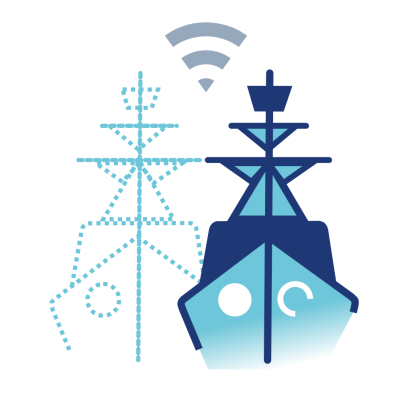The Ship Energy Systems Digital Twin Program
DIGITSENSE

Short description
The goal of the DIGITSENSE Research Program is the development of an innovative intelligent digital-twin of ships' energy systems which will constitute an integrated platform for the collection, processing and visualization of the measurements from the various sensors installed on the ship, while at the same time these measurements will “feed” simulation models (graded levels of physical depth) of the ship's energy systems.
Through this platform, real-time and cumulative estimation of fuel consumption, energy flows and the carbon footprint of the energy systems of various types of ships will be achieved.
The simulation software will be embedded in the measurement collection and processing software, which will be equipped with machine learning algorithms to enable the initial calibration of the simulation models and, subsequently, to evaluate the reliability of the measurements and the operational state of energy systems in real time.
The coordinator of the project is the Department of Shipbuilding and Marine Engineering of the School of Naval Cadets, with Associate Professor Dr. Pariotis Efthimios and Coordinator the Associate Professor Dr. Ioannis Katsanis.
DIGITSENSE Program Objectives
The individual objectives of the DIGITSENSE Research Program are:
-
1.
Development of physical simulation models of energy systems of a naval installation, their application and initial calibration based on measurement data.
-
2.
Appropriate adaptation of sensors, equipment and measurement collection platform based on system application requirements (digital-twin).
-
3.
Integration of physical simulation models into the measurement collection platform. Creation of original DIGITSENSE digital twin format.
-
4.
Pilot application of the digital twin DIGITSENSE in a naval installation. Control of smooth operation, and evaluation of results.
-
5.
Creation of educational material based on the results of the DIGITSENSE pilot application with the aim of optimizing ship energy systems.
-
6.
Utilization of the results of the pilot application of DIGITSENSE for the purpose of economic and commercial exploitation of the system. Elaboration of a specific business exploitation plan.
-
7.
Linking innovation research and entrepreneurship as well as strengthening the competitiveness, productivity and extroversion of the PRISMA company towards international markets and increasing its turnover.
-
8.
Job creation during the system development phase and afterwards, as well as support for postgraduate research.
-
9.
Dissemination and promotion of the results of the project in Greece and internationally.
The main goal is that the simulation models used to describe the ship's energy systems are based on physical principles, an element that will allow the digital twin to evaluate the energy efficiency of the various systems depending on the operating conditions (combining elements / measurements that are obtained from various sources, which determine the boundary conditions of each system). This is a particularly useful feature that enhances the competitiveness of the final product as it allows the integrated system to be implemented not to be limited to simple recording and statistical processing of the data received, but it will be possible to critically evaluate (based on physical principles of operation) the data.
The proposed digital twin of the ship's energy systems will be developed on a software platform that will contain libraries with ready-made components of a ship's main and auxiliary systems, e.g. engines, compressors – supercharger turbines, refrigerators, etc. In the framework of the project, a pilot application of the "digital twin" will be carried out in a marine installation (real operating conditions) where, first of all, the individual models will be calibrated, and then the energy flows will be assessed based on the data to be collected in real time by the integrated measurement collection and processing platform.
The potential of the digital twin is great, as evidenced by the intense research and commercial interest shown internationally. In full development the digital twin of all energy systems on a ship can be used to prioritize energy flows and evaluate (via physical computational models) all signals received from engine room sensors in order to map in real time the energy flow in a ship as well as to produce reliable and useful (from a financial and energy / environmental point of view) performance indicators (KPI's).
The fact that the digital twin is based on physical models and real data from ships makes it capable of supporting additional applications compared to existing measurement recording and statistical processing systems, and combined with artificial intelligence techniques to diagnose the operational condition of the various systems but also providing indications for optimal energy management depending (in real time) on the current conditions (operational and environmental) significantly increasing the operational capacity of a ship and reducing its environmental footprint at the same time.






